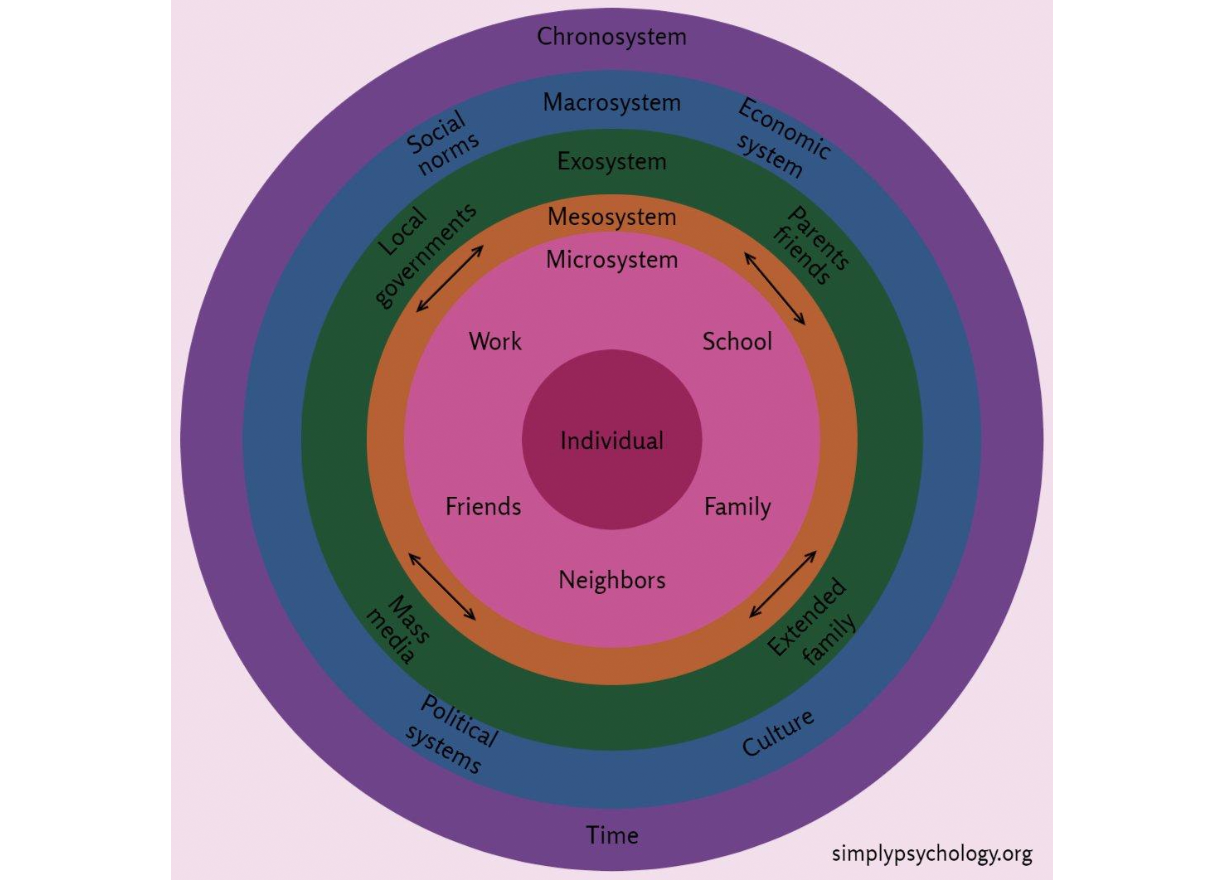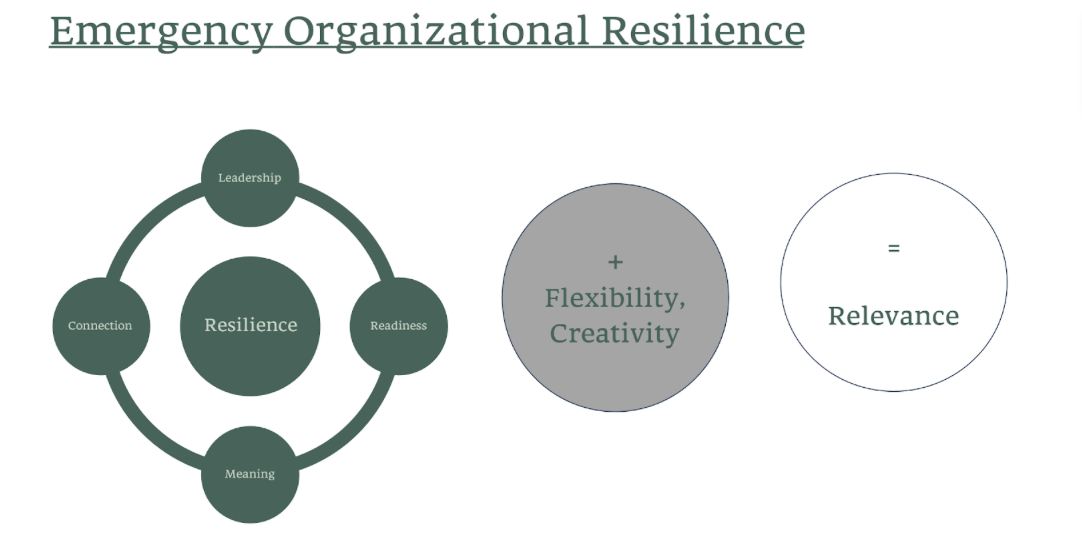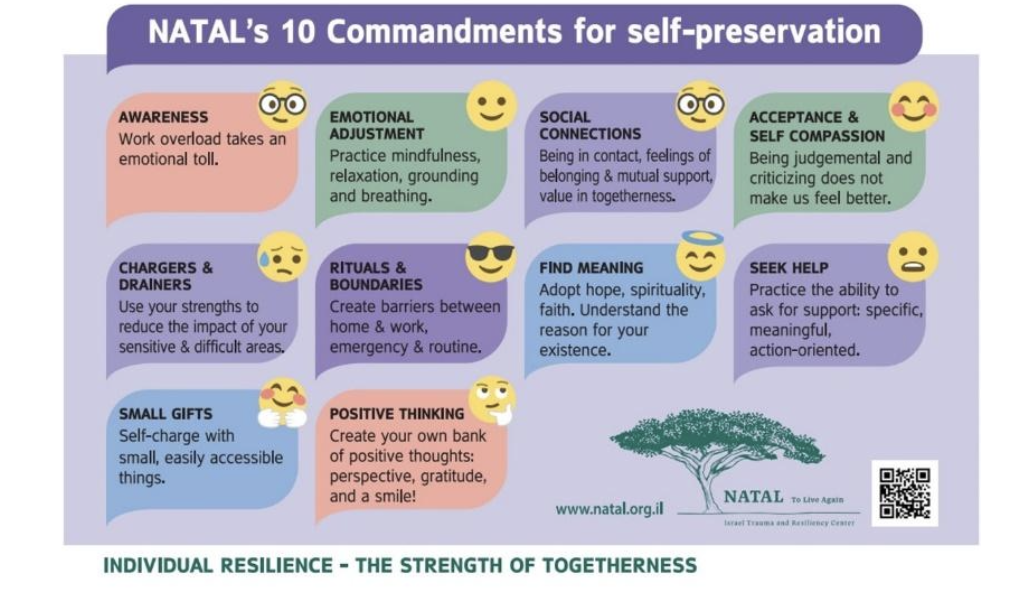In the aftermath of Covid and with the rise in antisemitism, violence and polarization, educators are at the forefront, juggling social, emotional, and academic stress, as well as their own burdens. The article will aim to redefine crisis coping mechanisms and propose models of resiliency, leadership, and self-care specifically tailored for educators.
Nurturing Resiliency, Leadership, and Self-Care in an Educator’s World Clouded by the Rise of Antisemitism

Our world is faced with copious current challenges, specifically a high rise in antisemitism which can be felt on various levels. According to Brofenbrenner’s Ecological Systems Theory (1977), an individual’s development is influenced by a series of interconnected environmental systems, ranging from the immediate surroundings (e.g., family) to broad societal structures (e.g., culture). These systems include the microsystem (immediate environment), mesosystem (interactions), exosystem (indirect, but powerful influence), macrosystem (wider ideological and cultural context), and chronosystem (events and transitions over a lifetime), each representing different levels of environmental influences on an individual’s growth and behavior.
In an educator’s world in the current reality, the development of these interrelated systems is impacted by two major influencers: resilience and self-care.
Resilience
Resilience can be defined as how well a person can adapt to the events in their life. Resilience is a learned skill and can be increased or changed over a lifetime. In the education world, resilience skills that are needed for coping include psychological and practical preparedness and strategies; sharing of leadership tasks during stressful times; and preparedness for taking steps toward returning to normal functioning following an unbalanced period.
NATAL suggests a four-part resiliency model for amplifying resilience and preventing secondary trauma:
Leadership and self–awareness (identifying personal needs and challenges). Leadership in the education world can be defined as the exercise of developing a vision, providing direction, offering support to teachers, staff, students, and learning communities, as well as decision making, taking responsibility and initiative.
Readiness and prevention (enhancing sense of capability through training programs and practicing and implementing tools learned).
Connection (strengthening cooperation and social support).
Meaningfulness and hope (uniqueness, optimism, creating a vision, believing in what you do).

NATAL’s resiliency model shows how resilience (when combined by the four parts mentioned above), together with flexibility and creativity, can influence how we experience relevance both on an individual and organizational level.
Self-Care
Self-care involves learning about our strengths and coping styles, how to manage stress, and how to connect with others for mutual support. It also involves being proactive in maintaining our physical wellbeing and knowing when to seek help.
If we look through Bronfenbrenner’s magnifying glass, we will able to see how these factors interact, influence and interrelate with each other in the varying environmental systems. For example, resilience can be built through self-care, fortifying an educator’s inner strength and emotional regulation, which in turn can ripple outwards to shape leadership style. This leadership style may be influenced by a macrosystem (ideological and cultural context—rise in antisemitism) which sometimes contradicts the microsystem (our immediate environment). The main challenge is to develop coping mechanisms within these contradictions.
Coping Tips
Here are 5 practical tips for nurturing teachers and developing adaptive coping mechanisms in an education environment.
1. NATAL’s CAN-COPE Model
Various techniques are linked to heightened psychological resilience and stress reduction. The model includes 4 stages: calming, normalizing, connecting and hope.
Calming. Stress naturally accumulates in the body and mind. In order to calm the body, we suggest grounding techniques such as mindfulness, regulating breathing, muscle relaxation, engaging in physical activity (exercise, dancing, etc.). To calm disturbing thoughts during times of stress, try to be aware of the amount and type of information coming from groups and social networks. Harsh images can trigger fears and bad feelings, so reduce and even avoid exposure. Pay attention to generalizations and extreme thinking or closed mindedness. Try to broaden perspective by exploring other options and conversing within the team about dilemmas in a nonjudgmental manner.
Normalizing. There is no need to worry about normative physical, emotional, cognitive, and behavioral reactions. Your body may react with heightened heartbeat, trembling, stomach ache, dry mouth, general weakness, and stiff muscles. On an emotional level you may feel fear, respond with anger to small situations or feel indifferent. Cognitively we may make unreasonable judgments, feel confused or have difficulty making decisions. Behaviorally we may respond more aggressively, become overdependent on others, or be less responsive. These responses are normal within the current abnormal situation (rise in antisemitism) and can cause anyone heightened stress. We can help ourselves regulate these responses (see Calming) and seek professional support if needed.
Connecting. Seeking social support such as engaging in hobbies, encouraging social gatherings, volunteering, and family involvement can all play a critical role in adaptive coping.
Hope. Being involved in activities that create a sense of control over the situation can substantially increase our feeling of hope. For example, volunteering in the community. On a team level, leaders and managers should allow teachers to feel trust in them and in their abilities, involve them in decision-making, and give them significant responsibilities within the school environment. On a personal level, we can instill hope by reminding ourselves that this is a temporary situation, and thinking together about the future and returning to routine. The CAN COPE model also works very well with children and adolescents.
2. Work Culture
We recommend encouraging a work culture characterized by perseverance and adaptability. Perseverance allows us to keep hope (a critical factor in resilience), by constantly challenging ourselves to move forward and to do better. It allows us to dream. There are several benefits to being adaptable in an education culture. Adaptability can equip us to face challenges, it can enhance our leadership skills and help us feel more relevant.
3. Self-Care Practices
Practices that can be used on a team level include mindfulness meditation and reflective journaling. You can also incorporate some of NATAL’s 10 commandments practices into your daily routine.

4. Amplifying Empathy and Fostering Caring Interpersonal Interactions
These create a work environment where communication thrives, conflicts recede, and team dynamics flourish. Teachers feel empowered to create a harmonious class climate and establish respect for one another.
5. Burnout
Protect your team from the pervasive threat of burnout. Allow the team regular breaks, create a warm and inviting teacher’s room, and encourage the team to consult with experts (school counselor / school psychologist).
Everybody has resilience. Two factors play a crucial part in helping educators develop and sustain adaptive coping mechanisms, especially in the current challenging period: enhancing resilience, and nurturing and maintaining self-care. Each of these factors can be cultivated, focused on and preserved within the different levels of the ecosystem, specifically in the microsystem of education.
NATAL, Israel’s first Trauma and Resiliency Center, is a nonpartisan, internationally recognized and awarded nonprofit, with over 25 years of experience in the fields of resiliency building and trauma treatment, impacting over 500,000 people. Learn more about NATAL.



